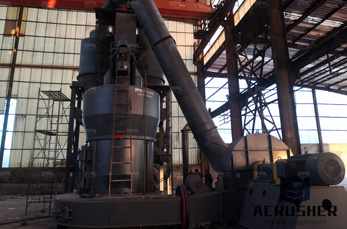 WhatsApp)
WhatsApp) WhatsApp)
WhatsApp)
a fine powder produced by grinding Portland cement clinker ... succession of chemical reactions takes place (see cement kiln) as ... to form the finished cement powder.

Concrete is a composite material consisting of a binder, which is typically cement, rough and fine aggregates, which are usually stone and sand, and water. These ...

The series of chemical reactions between calcium and silicon dioxide compounds form the primary constituents of cement i.e., calcium silicate.

Table 2: Composition of portland cement with chemical composition and weight percent. When water is added to cement, each of the compounds undergoes hydration and ...

what chemical reaction takes place to form cement clinker. what chemical reaction takes place to form cement clinker ; ...

In its simplest form, concrete is a mixture of paste and aggregates, or rocks. The paste, composed of portland cement and water, coats the surface of the fine (small ...

The kiln is at the heart of the manufacturing process and in order to heat the materials, a 2,000°C flame is required. Once inside the kiln, the raw meal is heated to around 1,500°C. At this temperature, chemical reactions take place to form cement clinker.

When water is added to this mixture, the chemical reaction hydration begins. Concrete does not harden because of evaporation. It hardens because of hydration. The five major compounds in Portland cement are tricalcium silicate, dicalcium silicate, tricalcium aluminate, tetracalcium aluminoferrite and gypsum.

Composition of cement. ... Portland cement gets its strength from chemical reactions between the cement ... Chemical composition of clinker The cement clinker formed ...

Concrete is a composite material composed of coarse aggregate bonded together with a fluid cement that hardens over time. Most concretes used are lime-based concretes ...

The kiln is at the heart of the manufacturing process. Once inside the kiln, the raw meal is heated to around 1,500 degrees C – a similar temperature to that of molten lava. At this temperature, chemical reactions take place to form cement clinker, which contains hydraulic calcium silicates.

An overview of the hydration reactions in concrete ... and the reactions that take place depend on whether ... calcium aluminate hydrates form. The reaction ...

Cement is a global commodity, manufactured at thousands of plants. The industry is consolidating globally, but large international firms account for only 30% of the ...

2.4 Cement Plant Descriptions. ... Successive chemical reactions take place as the temperature of the raw ... A typical cement clinker consists of the compounds shown ...

Portland cement clinker is the essential ingredient of ... Reaction with water occurs only at the surface of ... This means that little blending takes place, ...

chemical reactions take place producing nodules, ... residual lime to form C'nS. The reaction, ... i polished and etched si'>-tioii of typical purtland cement clinker.

How Does Limestone Form? Most carbonate rocks were deposited from seawater. These sedimentary carbonate rocks are common on every continent and have formed .

Portland cement clinker thermochemistry ... Thermochemistry. The clinker manufacturing process requires a large input of energy.

Chemical Attack on Concrete: Cement. Aggregates. Admixtures. Mixture Design. Fresh Concrete. Hardened Concrete. Dimensional Stability

Clinker: reactions in the kiln. The milled and blended raw materials go to a silo and then to the kiln. Reactions which take place as the feed passes through the kiln ...

The chemistry of cement functionConcrete mix is a mixture of cement and aggregate - sand. and gravel. When water is added to this the cement undergoes a series of chemical reactions. to form a "gel" (a coloidal2 system).

Cement hydration. By the process of hydration (reaction with water) Portland cement mixed with sand, gravel and water produces the synthetic rock we call concrete.

Frequently Asked Questions about Cement and Concrete Basics.

Cement Chemistry: Cement. Aggregates. Admixtures. Mixture Design. Fresh Concrete. Hardened Concrete. Dimensional Stability
 WhatsApp)
WhatsApp)